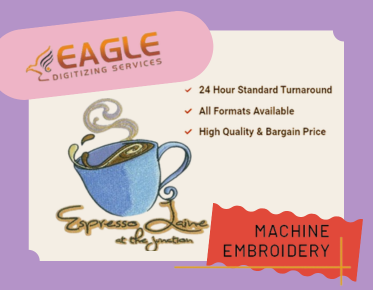Choosing the Best Format for Embroidery Digitizing
Embroidery digitizing is a crucial process for transforming artwork into a format that embroidery machines can understand. The choice of format can significantly impact the quality and efficiency of the embroidery process. Among the various formats available, the Tajima (DST) format is widely recognized as a standard in the industry. This format is compatible with most embroidery machines and is known for its reliability and precision.
Understanding Embroidery File Formats
Embroidery file formats are essentially the language that embroidery machines understand. Each format has its unique characteristics and is compatible with specific machine brands. The Tajima (DST) format is the default choice for many due to its widespread compatibility and efficiency in handling complex designs. Other formats like EMB, CND, EXP, DSB, PXF, and POF are also available and can be used depending on the specific requirements of the embroidery machine being used.
Why Tajima (DST) is Preferred
The Tajima (DST) format is preferred by many professionals in the embroidery industry because it offers a balance of detail and simplicity. It supports a wide range of stitch types and is efficient in terms of file size, which makes it easier to transfer and store. Moreover, its compatibility with a broad range of machines makes it a versatile choice for both small and large-scale embroidery projects.
Other Formats and Their Uses
While the DST format is popular, other formats like EMB and EXP are also used in specific scenarios. For instance, the EMB format is often used for more detailed designs that require additional layers of information, such as color changes and stitch types. The EXP format, on the other hand, is commonly used with Melco machines and is known for its ability to handle intricate designs with precision.
Choosing the Right Format for Your Needs
When selecting a format for embroidery digitizing, it's essential to consider the type of embroidery machine you are using and the complexity of the design. For those using Tajima machines, the DST format is a straightforward choice. However, if you are working with a different brand, you may need to explore other formats that offer the necessary compatibility and features.
Working with Eagle Digitizing
Eagle Digitizing offers a comprehensive range of embroidery digitizing services that cater to various needs. Their expertise in handling different formats ensures that your designs are digitized accurately and efficiently. Whether you need a simple logo or a complex design, Eagle Digitizing can provide the right format for your project.
Future Trends in Embroidery Digitizing
As technology advances, the field of embroidery digitizing is expected to evolve with new formats and techniques. The integration of AI and machine learning could lead to more automated and precise digitizing processes, allowing for even more complex designs to be created with ease. Staying updated with these trends will be crucial for businesses looking to maintain a competitive edge in the embroidery industry.
Conclusion
Choosing the right format for embroidery digitizing is essential for achieving high-quality results. While the Tajima (DST) format remains a popular choice, exploring other formats can provide additional benefits depending on your specific needs. By partnering with experienced providers like Eagle Digitizing, you can ensure that your designs are digitized to the highest standards, ready to meet the demands of the modern embroidery market.



